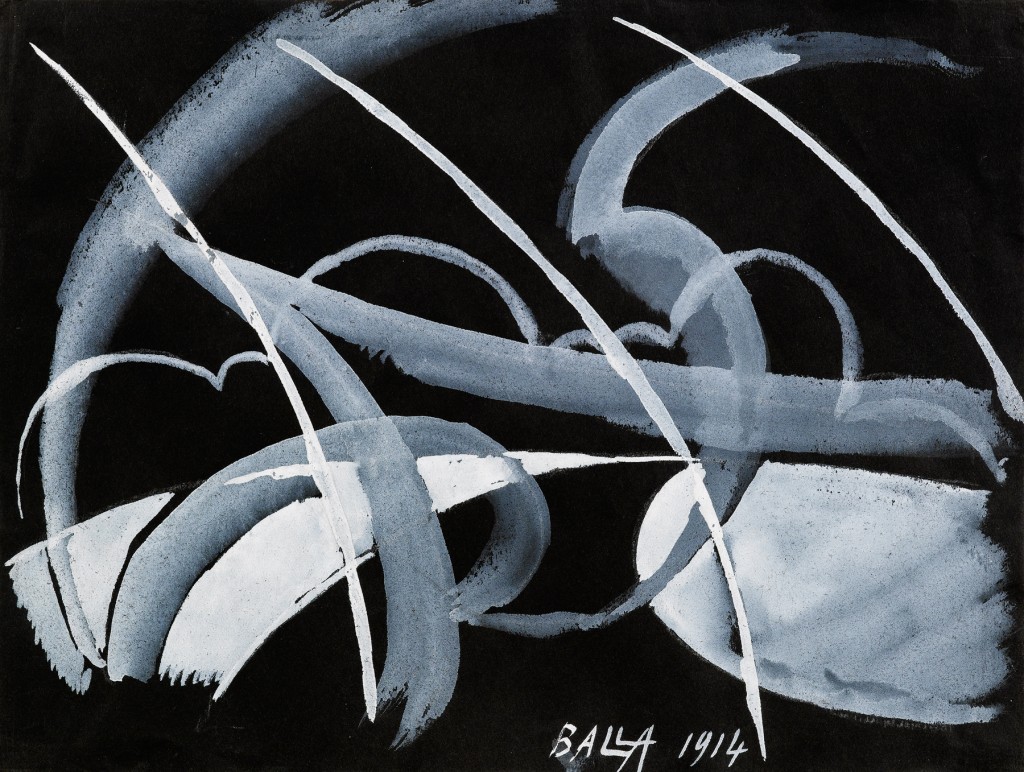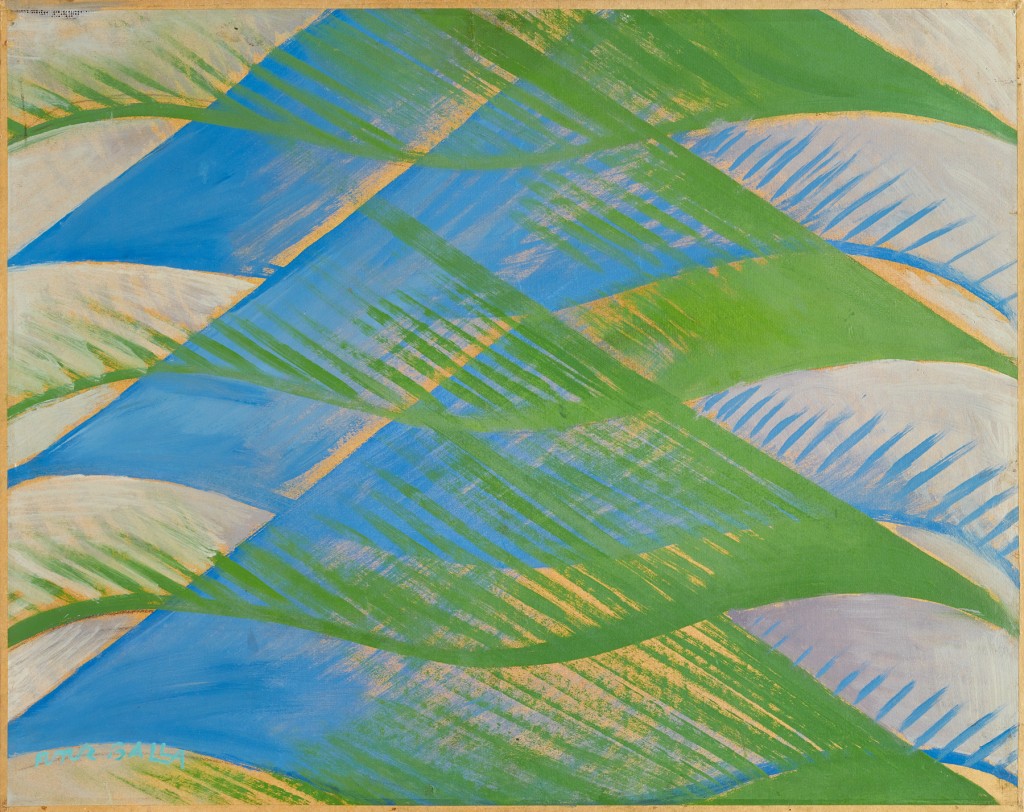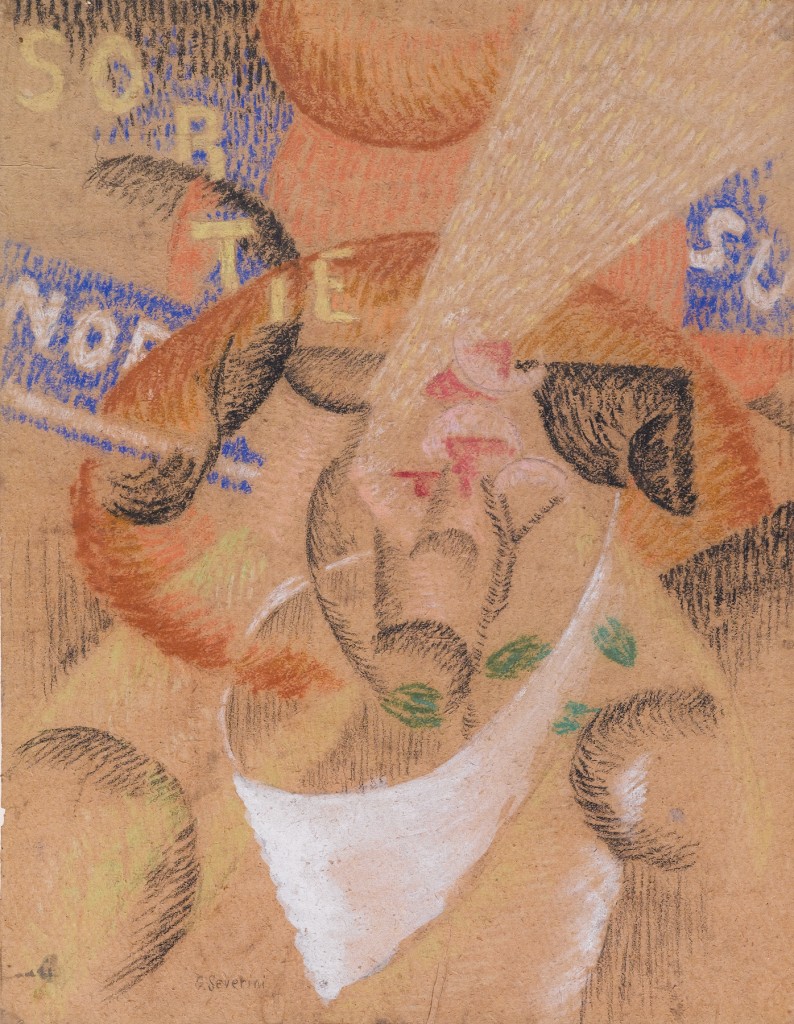Futurism – Italy’s artistic answer to a social change, culture, and art influenced by scientific progress and technological advances, driven by the urge to react to the French cultural self-positioning and leave behind the past for good. Exemplary works by Giacomo Balla and Gino Severini are up for auction at Dorotheum.
Futurism was an exquisitely Italian phenomenon that arose in 1909 as a literary movement (thanks to the poet Filippo Marinetti) and then became the first national artistic avant-garde. The roots of the movement can be found in the Italian sensation of being excluded from the European art scene (with Paris as its art capital) and in the ardent desire to play a significant role in it. That was a moment of major changes including a fast transformation of society, culture, and art triggered by key factors such as two World Wars, scientific progress and technological advances, from which typical Futurist principles like simultaneity, interpenetration and dynamism directly derived. In a world like that, in which young people had to choose between the “old” and the “new”, Futurists decided to fight against the past and put forward the idea of a dynamic and modern present, strengthened by a fresh and positivistic faith in progress.
Marinetti clearly created Futurism as the Italian answer to the French artistic experiences, and it was probably for this reason that, in 1909, he published the “Manifesto del Futurismo” in the Parisian newspaper “Le Figaro” (the first important exhibition of the group was also held in Paris, at the Bernheim-Jeune gallery in 1912).

At that time no Futurist painting or sculpture had been realized and artists like Boccioni or Balla, albeit promising painters, were still far from the style that would eventually make them famous and recognizable all over the world. It was thanks to Marinetti’s extraordinary tenacity and resources that the movement reached such success. A year later he gathered five great artists to sign the “Manifesto tecnico dei pittori futuristi”, proclaiming ideas such as the abolition of the traditional perspective of Alberti and Brunelleschi in favor of a new vision based on the simultaneity of different points of view. The aim was to counter the ancient and static art with a new, dynamic way of painting that could convey the sense of movement and speed, and put the observer right into it.

46.5 x 58 cm
Dorotheum is pleased to auction important Futurist works by outstanding artists like Giacomo Balla, the oldest member of the group, and his pupil Gino Severini. The former, who specialized in abstract paintings, is present with two works from 1913 and 1914. Those were the years of the “Velocità di automobili” (“Speeding automobiles”), “Voli di rondini” (“Swallows in flight”), and “Line andamentali” (“Paths of movement” / “Lines performing”) – series of works characterized by abstract compositions similar to light trajectories, in most cases made of circles and triangles (the triangle, with its penetrating force, is the dynamic form par excellence and therefore recurrent in Balla’s work).

realized price € 369,000
The latter, Gino Severini, more sensitive and less prone to confusion and provocation than his colleagues, was present at Dorotheum with “Sortie Nord-Sud” from around 1913. In this painting, as in most of his works, the intention of representing motion and dynamism was perfectly achieved, though in a milder and more lyrical way, due to the influence of Seurat’s pointillism and the aesthetic of classical Cubism. As a matter of fact, Severini lived in Paris for many years, where he came in contact with artists such as Braque, Dufy,
Valadon and her son Utrillo. This led him to a deeper exchange with French avant-gardists in general, and this is why his works are always characterized by a rather joyful and happy chromatism and dynamic instead of violent structures.
(myART MAGAZINE No. 06/2015)











